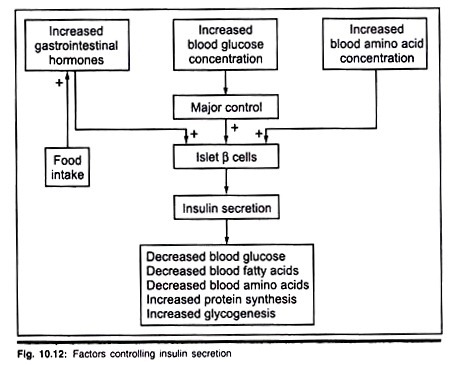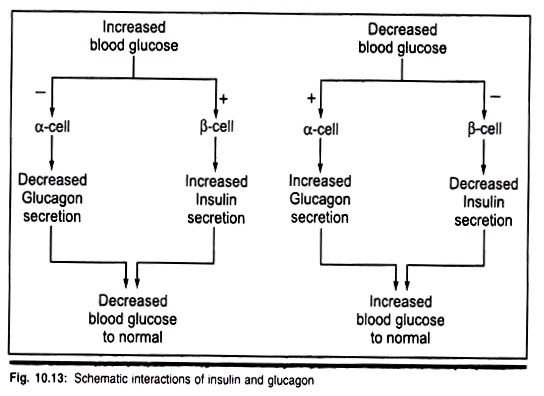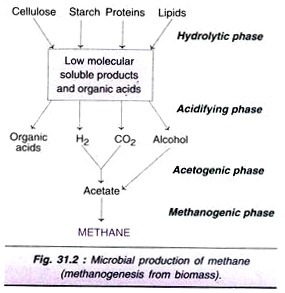The following points highlight the three natures of genetic material. The natures of genetic material are:- 1. Bacterial Transformation 2.Transduction and 3. Transfection.
Contents
Genetic Material Nature # 1. Bacterial Transformation:
The experiments conducted on pneumonia causing bacteria by Griffith made a milestone observation which proved that DNA is the genetic material. The experiments by Griffith performed in 1928 are also called Griffith effect on Diplococcus pneumoniae. These bacteria caused pneumonia in mice.
There are two strains of bacteria:
Type I:
Smooth (S) bacteria have a smooth capsule of polysaccharides. It is virulent (pathogenic). The capsule allows bacteria to escape destruction by enzymes of the host.
Type II:
Rough (R). It lacks protective capsule and is non-pathogenic. Absence of polysaccharide coat enables the host animal to kill the bacteria by its enzymes.
It was discovered by Griffith that when heat killed dead culture of pathogenic strain (S) together with living non-pathogenic strain R were injected into mice, the mice died of pneumonia infection.
Living pathogenic (S) bacteria were recovered from dead mice. Thus, some factor of dead (S) bacteria transformed the live (R) bacteria into (S) type, so that they could make polysaccharide capsule and became pathogenic. This is called Transformation principle.
These experiments proved that non-pathogenic strain of bacteria when mixed with heat killed pathogenic bacteria were transformed into pathogenic bacteria. This transformation from non-pathogenic to pathogenic bacteria represents genetic change. Heat killing of bacteria leaves their genetic component undamaged.
These genetic components pass through the cell wall of living recipient bacteria and undergo genetic recombination with recipient bacteria’s genetic material. When smooth (S) gene of the capsule is present, the capsule is formed and bacteria become pathogenic. When rough (R) allele of this gene is present, no capsule is formed and bacteria remain non-pathogenic.
Later, in 1944 Avery, MacLeod and McCarty, conclusively proved that DNA is the genetic material. They successfully repeated the same experiment. They also discovered that DNA of pathogenic smooth strain (S) has entered the cell of non-pathogenic strain (R) and transformed it into pathogenic smooth (S) strain. Therefore DNA has transformation capability. This proves that DNA is the genetic material and not the protein or any other cellular component.
Genetic Material Nature # 2. Transduction:
Chemical studies of virus and virus infected cells further confirmed that DNA is the genetic material.
Alferd D. Hershay and Martha Chase (1953) performed various experiments using T2 bacteriophage and E. coli bacteria. T2 virus contains a DNA core and a protective coat made up of a number of protein molecules. The function of protein coat is to protect the genetic nucleic acid and proteins play no part in their structure of genes.
A culture of T2 viruses was grown in radioactive 35S medium. The radioactive sulphur was incorporated by bacteriophages into their outer protein coat.
Another culture of bacteriophage T2 viruses was grown in radioactive phosphorus 32P medium. These viruses incorporated radioactive phosphorus into their DNA. These isotopes were used as DNA contains phosphorous and no sulphur while proteins contain sulphur in their outer coat and no phosphorus.
These two types of labelled viruses were allowed to infect two unlabelled separate cultures of E. coli bacteria. After about 30 minutes, which is their generation period, the bacteria were subjected to centrifugation and two fractions were separated.
The heavier infected bacterial cells settled at the bottom, while the phage particles remained floating as supernatant.
Fig. 2.2. Hershey-Chase experiment demonstrated that only DNA from bacteriophage enters into bacteria while protein coat of the bacteriophage remains outside. All the genetic information needed for synthesis of new protein coat and new viral DNA is provided by the viral DNA.
It was observed that the bacteria infected by 35S labelled virus particles showed no radioactivity. Only virus ghosts (coats) showed radioactivity because of radioactive sulphur in their coats. However, the bacteria infected by 32P labelled virus particles were radioactive. It can be concluded that during infection by T2 virus, only DNA (radioactive) has entered bacteria.
After some time, the virus DNA directs the synthesis of protein coats and complete virus particles are produced. These viruses escape after the lysis of host cells takes place.
Thus the virus has genetic material whose behaviour is similar to cellular genome. They are subjected to the same rules that govern the inheritance of other organisms. This proves that DNA is the genetic material.
Genetic Material Nature # 3. Transfection:
In eukaryotes also DNA is the genetic material. The DNA that is introduced into the recipient cells becomes part of their genetic material. The eukaryotic cells in culture medium which lack TK gene cannot produce enzyme. Thymidine Kinase and die in the absence of thymidine. When DNA containing TK+ genes are added to the culture medium, the cells take up DNA with TK+ genes and produce Thymidine Kinase enzyme and survive. This is known as transfection.
These experiments prove that DNA is the universal genetic material.
Summary:
DNA is the genetic material of eukaryotes, bacteria and most of the viruses. Experiments by various scientists have proved that DNA is the genetic material and not the proteins or any other cellular component. DNA can synthesize proteins and not the other way round. A change in the nucleotide sequence leads to the change in amino acid sequence, thus changing the proteins. Bacterial transformation: Griffith experiments on Diplococcus pneumoniae proved that DNA is the genetic material in bacteria.
When a mixture of heat killed pathogenic Smooth (S) bacteria and living non-pathogenic Rough (R) bacteria were ejected into mice, the mice died. What has happened is that DNA of dead (S) bacteria has entered the DNA of (R) bacteria and transformed (R) bacteria into (S) bacteria. This proved that DNA is the genetic material.
Later Avery, MacLeod and McCarty to repeated the same experiment. They injected a mixture of pure DNA of (S) bacteria and liver (R) bacteria into mice. The mice died of pneumonia. This confirmed that DNA is the genetic material of bacteria.
Transduction:
Hershey and Chase performed experiments using T2 bacteriophage and E. coli bacteria. A culture of T2 viruses was grown in 35S medium, sulphur entered into protein coat of viruses. A separate culture of T2 viruses was grown in 32P medium and phosphorus was taken up by DNA of the viruses. The two types of labelled viruses were infected two cultures of E. coli. It was discovered that virus DNA has entered and joined bacterial DNA.
This conclusively proved that DNA is the genetic material.
Transfection experiment in eukaryotic cells also proved that DNA is the genetic material.


